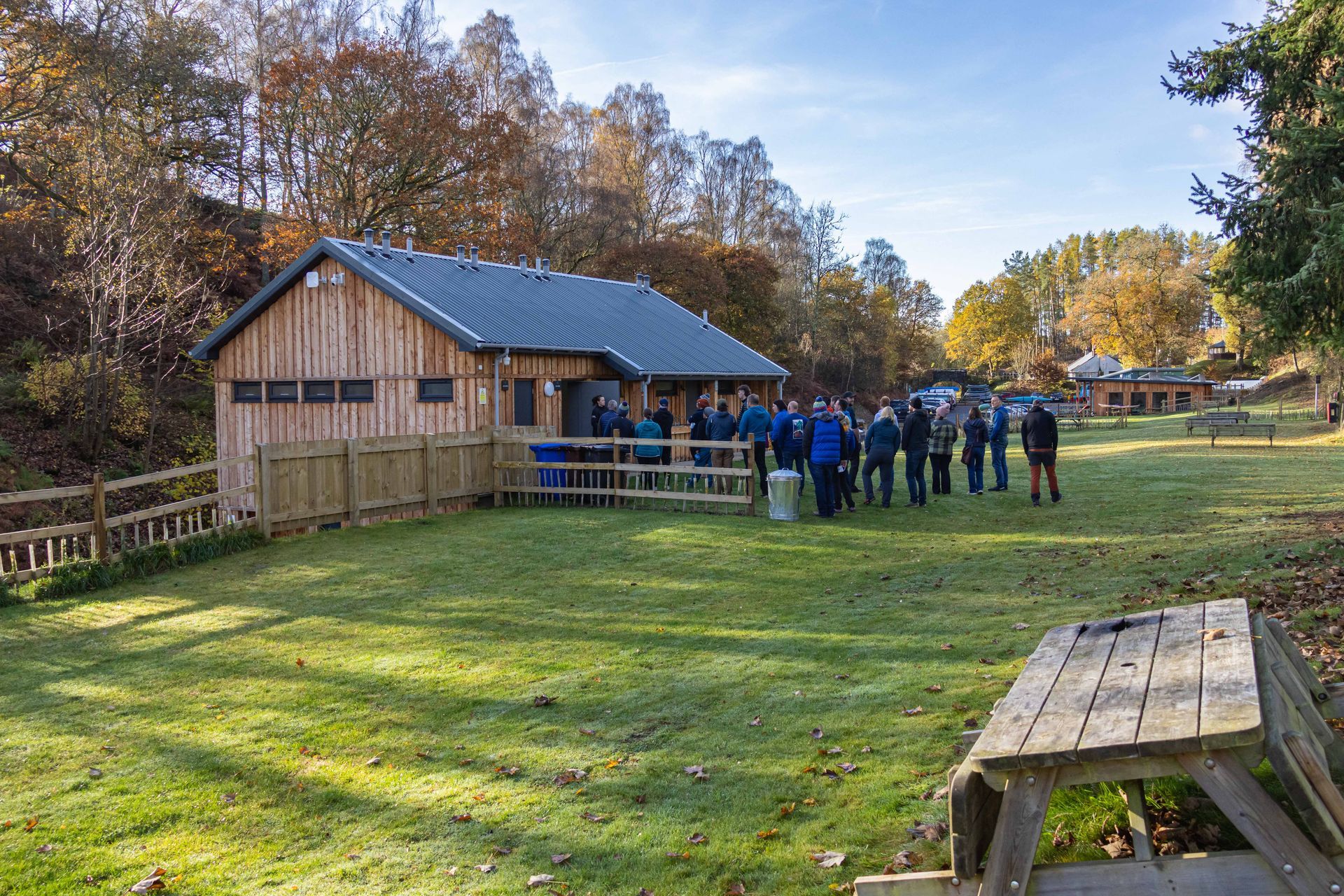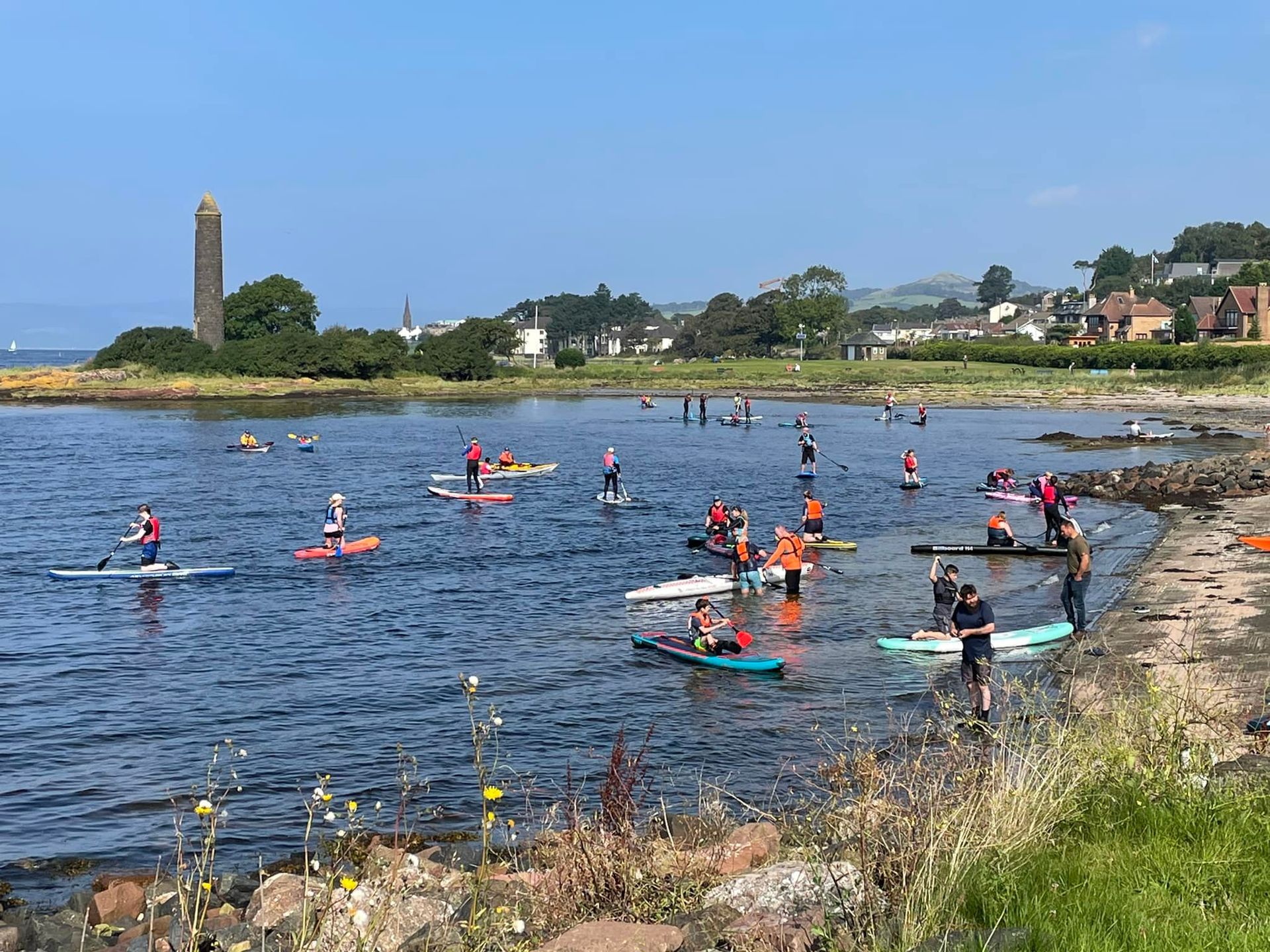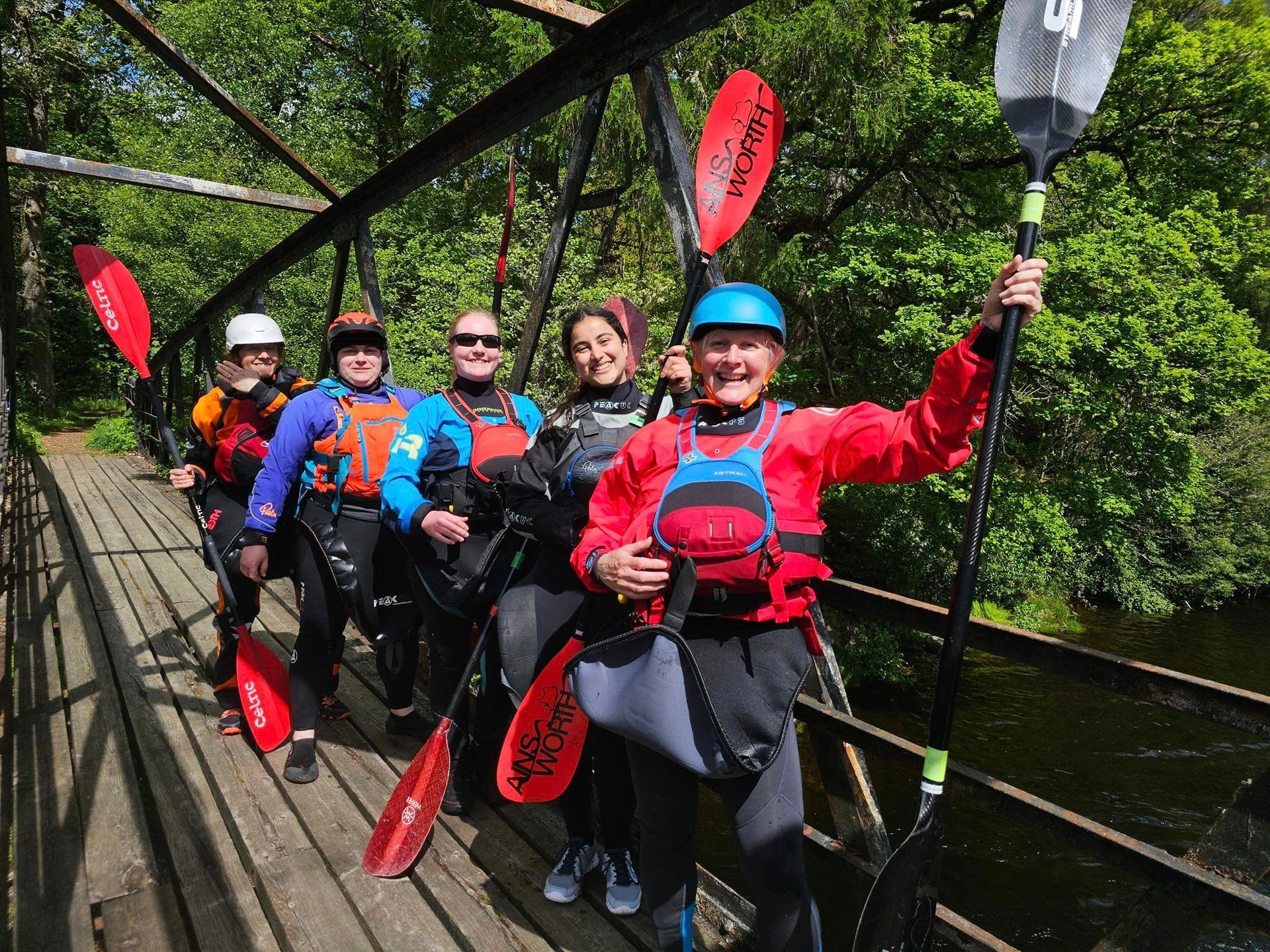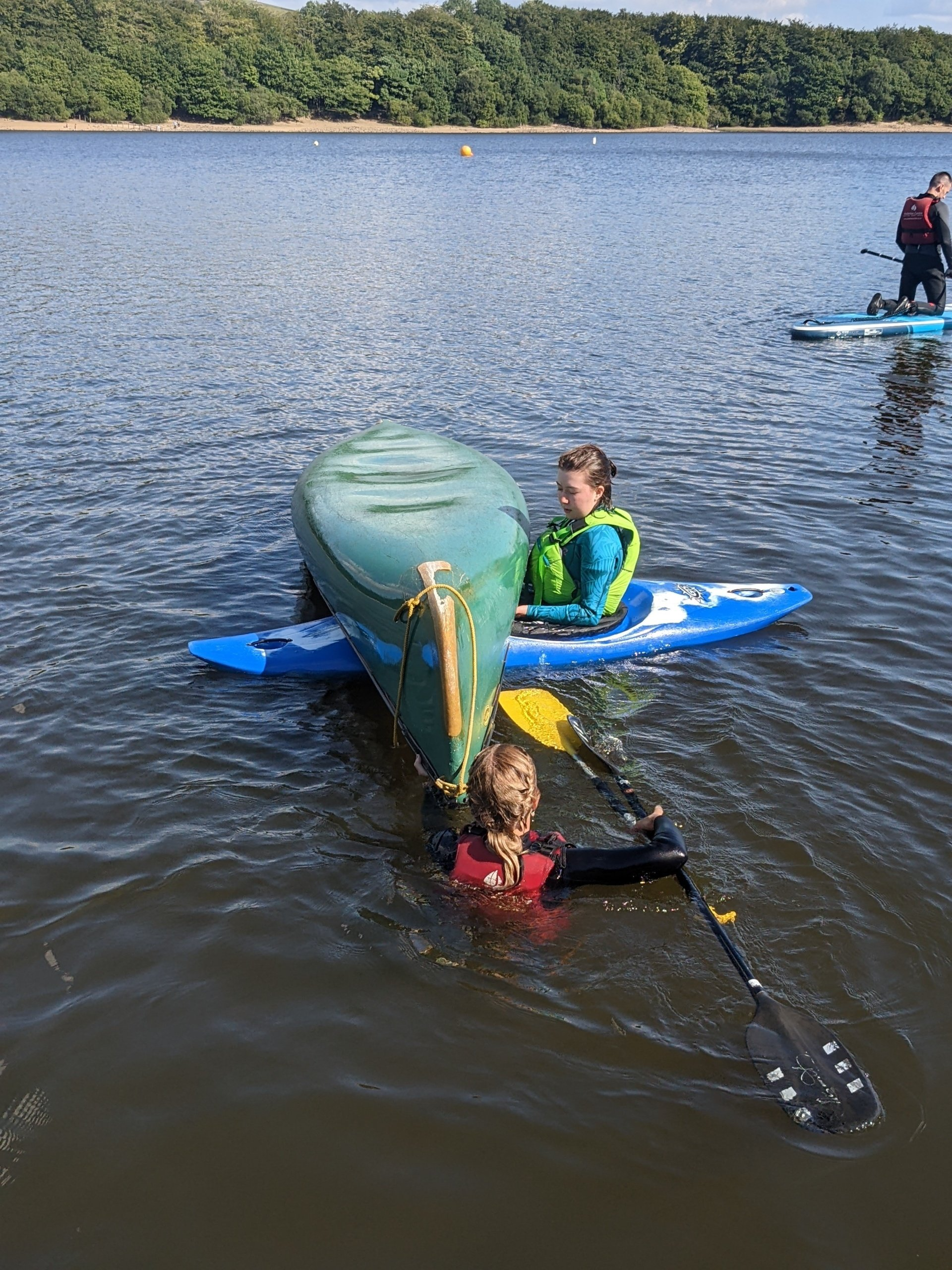Paddlesport Safety: Calling for Help on the Sea
In this article, written for the July 2022 edition of Scottish Paddler, we will take a dive into the maritime environment and will look at the many ways we can call for help whilst afloat.
Where it's almost always the case inland that we can get off a river, a loch or canal and stabilise a situation, on the sea we may not be afforded that luxury. So have we given much thought to how we call for help afloat?
First off, we should say that there’s no substitute for experience and building skills and whilst we recognise there's a ton of modern equipment out there we can use to summon help and there are external agencies on stand-by (in most cases), as paddlers we should be choosing to paddle in an environment within our own capabilities. If something does go wrong then we should have the self reliance, the capacity, the experience and the ability to be able to understand and process what's happening, come up with solutions and execute tactics to get ourself and our team safe. We simply can't rely on external agencies be it the Coastguard, RNLI, Search and Rescue or other vessels to come to our aid. So choose your venue carefully and make a plan according to your experience and your abilities and answer your own internal monologue about what's happening: Can I solve it if it goes wrong and should I be here in the first place?
With that said, if we are faced with a situation where we do need to raise the alarm and seek outside assistance, knowing who to call, how to make a distress call and what to say will arm us with valuable knowledge to speed up the process.
VHF/DSC Radio
The VHF radio is a vital piece of safety equipment and we should always carry one with us on the sea. We need to use the VHF every time we take to the water. This could, in its simplest form be a radio check, where we contact the closest coast guard station on channel 16 and ask if they can hear us loud and clear. We can also tell them who we are, where we are going, how many people are with us and what time we expect to get off the water. This becomes our float plan and in coastguard speak our routine traffic call. Making regular calls on the radio to the coastguard does four things, it highlights that the paddling community take water safety seriously; it informs the coastguard of boats in specific areas; it allows us to get familiar with the radio coverage at known locations and finally (and importantly) it familiarise ourselves with how to operate this vital piece of safety equipment.
When we are faced with unfamiliar situations then we naturally have to be more deliberative and analytical with our thinking. This takes a little more time and a little more brain space. If we never use the VHF radio and only call on it when we are in grave and imminent danger, then we’ll have to think about how to operate it which uses some of this (limited) brain space, which could have been dedicated to form solutions and decisions to the unfamiliar distress situation we are being forced to deal with. Using the VHF radio (and other safety equipment) instinctively is something we should all strive for.
Some important things to remember when using a VHF is that it operates in line of sight coverage and the higher we can hoist the radio antenna the further coverage we will get. Also most handheld radios have varying degrees of power so we should be selecting the highest power possible when transmitting a distress message. Modern radios come with a DSC function which allows us to initiate a distress message before we have to speak. When pressed, the DSC distress button will also send out an alert to any radio devices within the vicinity alerting them to our distress. If purchasing a new VHF radio then I would encourage you to get a good one and one with DCS functions.
If we are faced with a grave and imminent danger on the sea then we may have to broadcast a MAYDAY call. This is when we have exhausted all other options for self reliance and have a situation where we require outside assistance.
The Mayday Message
We spend a lot of time talking about, practising and getting ourself familiar with the process and content of a Mayday message. We have preloaded our thought process so it comes naturally, instinctively and quickly to us. See VHF and brain space above.
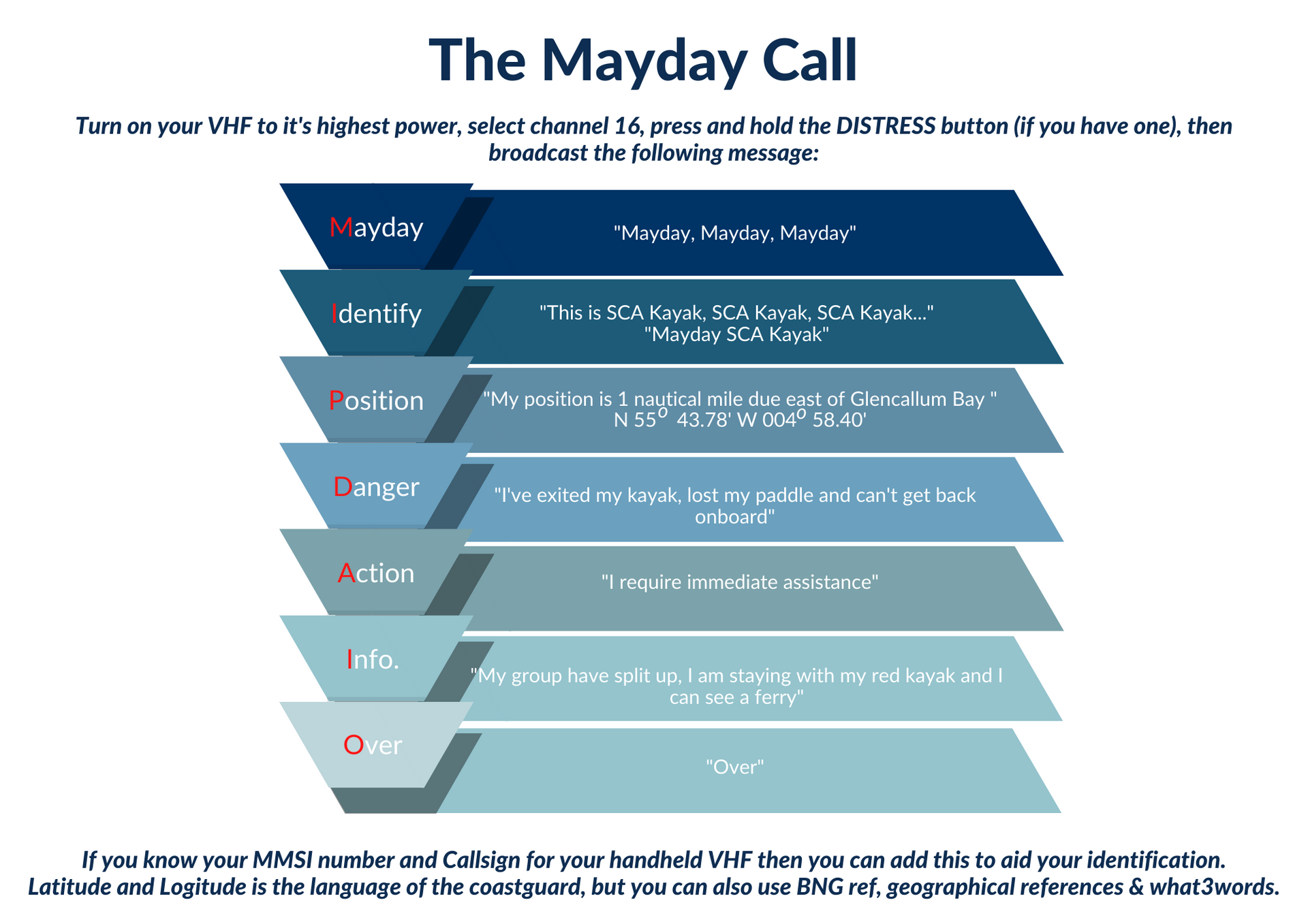
In addition to the procedure above it may be worth thinking about stabilising yourself if you can and sheltering the radio from the wind, which will reduce unnecessary interference.
Personal Location Beacons
There's little doubt that the PLB is becoming widely accepted as an important piece of safety equipment for the sea. Satellite derived positioning systems have utilised modern technologies which have made them smaller, more affordable and easier to deploy. They can now fit snugly onto your BA or on you person and should be taken out with you on every trip. We register the PLB in the UK with the MCA and they will ask questions about who you are, your contact details, emergency contact details and VHF MMSI number & Call sign. They may also ask questions about your kayak, its length and its colour and your usual area of operations. Registering these details is really important and arms the emergency services with vital pieces of information which all help in the time of emergency.
If you can, attach the PLB to the upper part of your BA. This means that if you are swimming around in the water and have to deploy it there's a better chance that the aerial is vertical and has a clear view to any satellites. Each PLB device comes with its own operating procedures and once again, it's really important that we are familiar with how to deploy them. Spend some time reading and familiarising yourself with the PLB you choose to use.
One limitation of the PLB is that more often than not, it is one way communication. Meaning we can alert someone to our distress but aren't quite sure if they have received our call. We should also recognise that it takes a little bit of time (average 30 minutes) for the coastguard to be notified of your distress and position. And if you haven't included emergency contact details, VHF MMSI or Call sign when you register your device then this may take significantly longer. Also remember that the PLB needs a clear visual on satellites so it may not work if you are standing over it, are close to high cliffs and certainly not in a cave.
Pyrotechnics
Now this will almost certainly open up a can of worms, but I’m of the opinion that a pyrotechnic still has a place in my safety equipment bucket. I recognise that not everyone has this opinion. But for me this low tech, easy to access and easy to deploy flare, which is widely recognised across all boating communities (and the public) is another means of attracting immediate attention to distress. Furthermore when venturing a little further off shore or in more remote locations then a pyrotechnic may give us the visibility and coverage that a mobile device doesn't. As a minimum I would carry a handheld smoke for day and handheld red for night. On the odd occasion I go offshore then two parachute flares will come with me.
To deploy a flare I would position myself downwind of any group members, get them to raft up and stabilise me. Put on some safety glasses and a glove if I had one, point the flare down wind at an angle of about 60 degrees and follow the firing instructions on the unit. Typically the parachute flare rises to a height of 300meters, burns for 90 seconds and is visible from 30 miles away. After a two minute interval I would set off the second flare and cross my fingers.
The pinpoint flare, be it a hand held smoke, red light, LED or laser should be activated when you have a visual on boats, people or helicopters using the same procedures as above but holding onto the flare for the duration. There is no escaping from the fact that a pyrotechnic is in essence a firework and should be used with due caution. If you get the chance to attend a sea survival course then I would highly recommend it.
We also recognise that pyrotechnics flares have a use by date, so we should replace them on a 3 yearly basis (some European manufacturers last for 4 years). You can dispose of old flares by contacting your local coastguard station.
Regardless of what means we use to summon outside assistance whilst afloat, what's important is that we are mindful of the potential pitfalls that come with all the above. Having a well thought out plan, which is shared with someone onshore goes a long way to help with any unexpected emergency.

